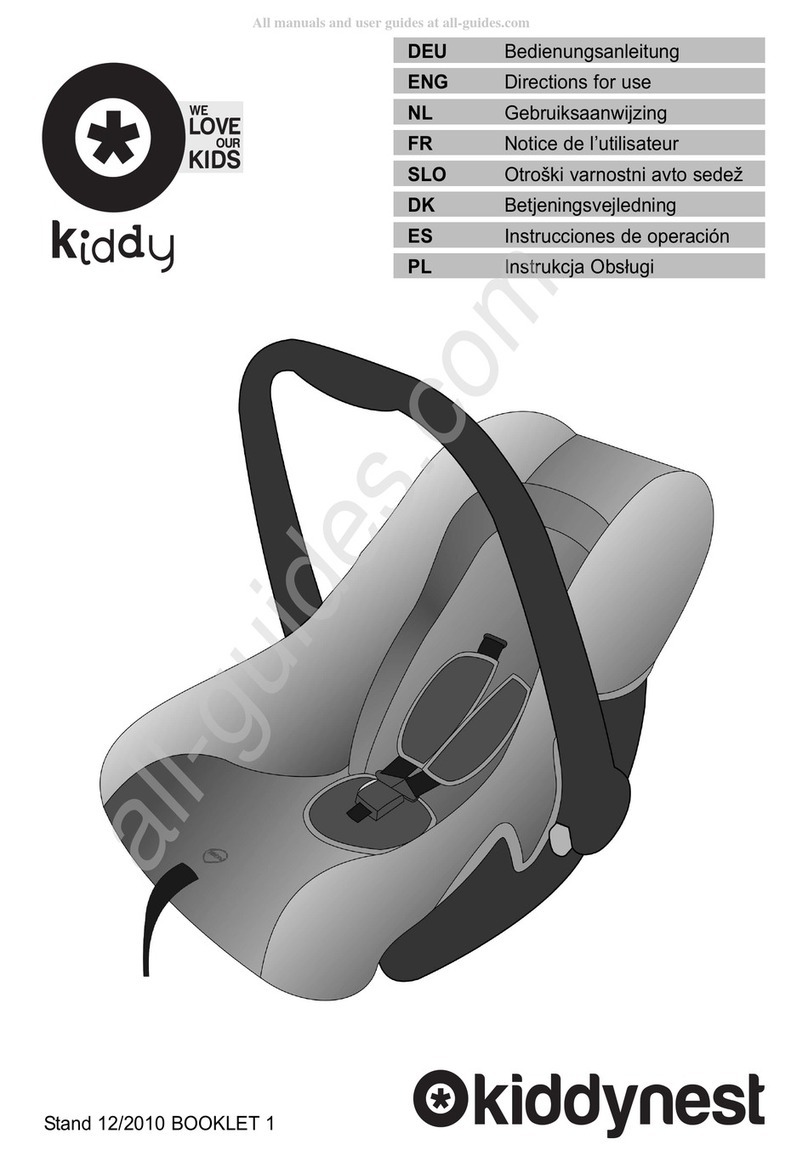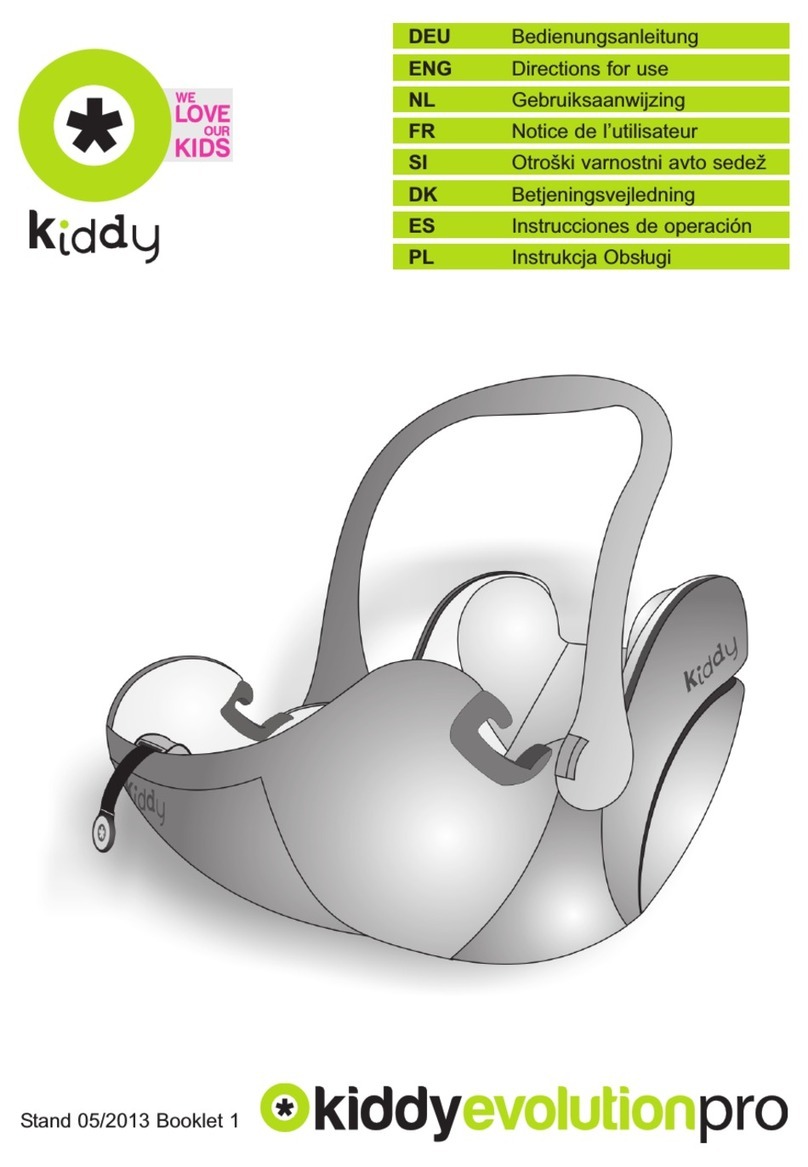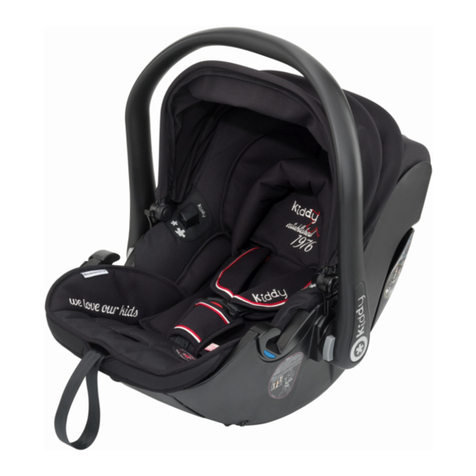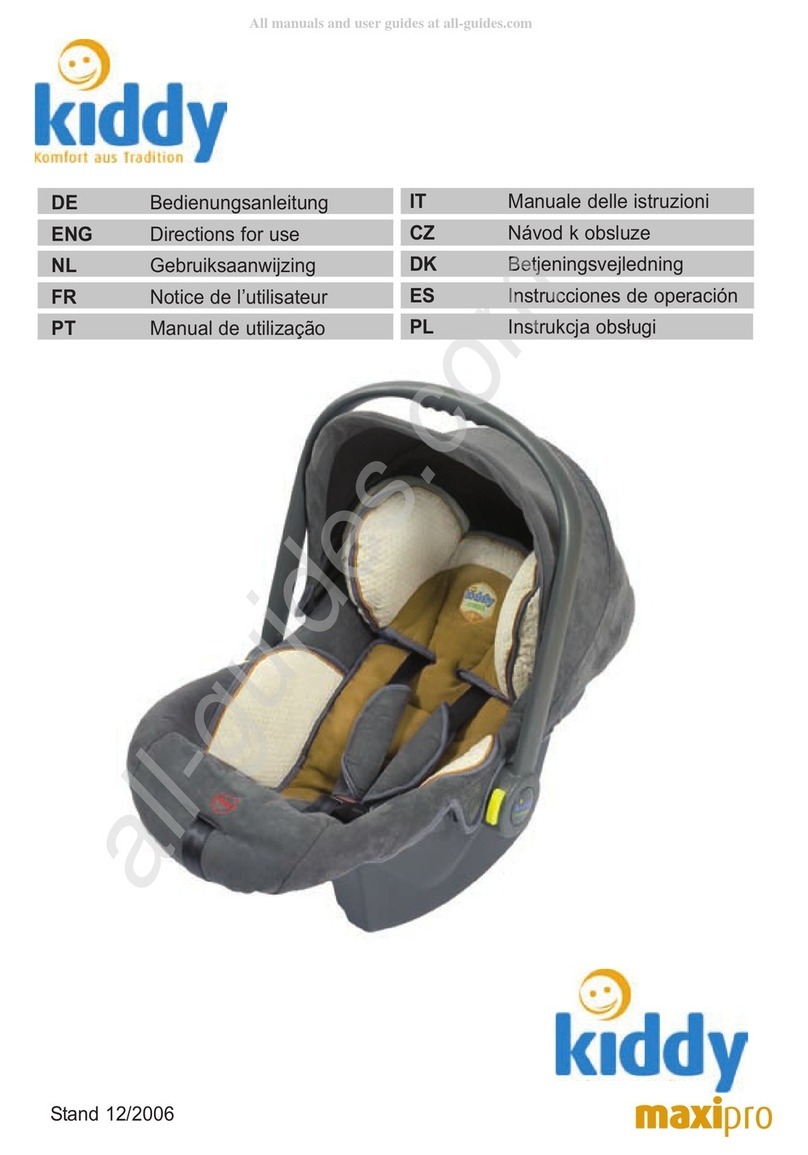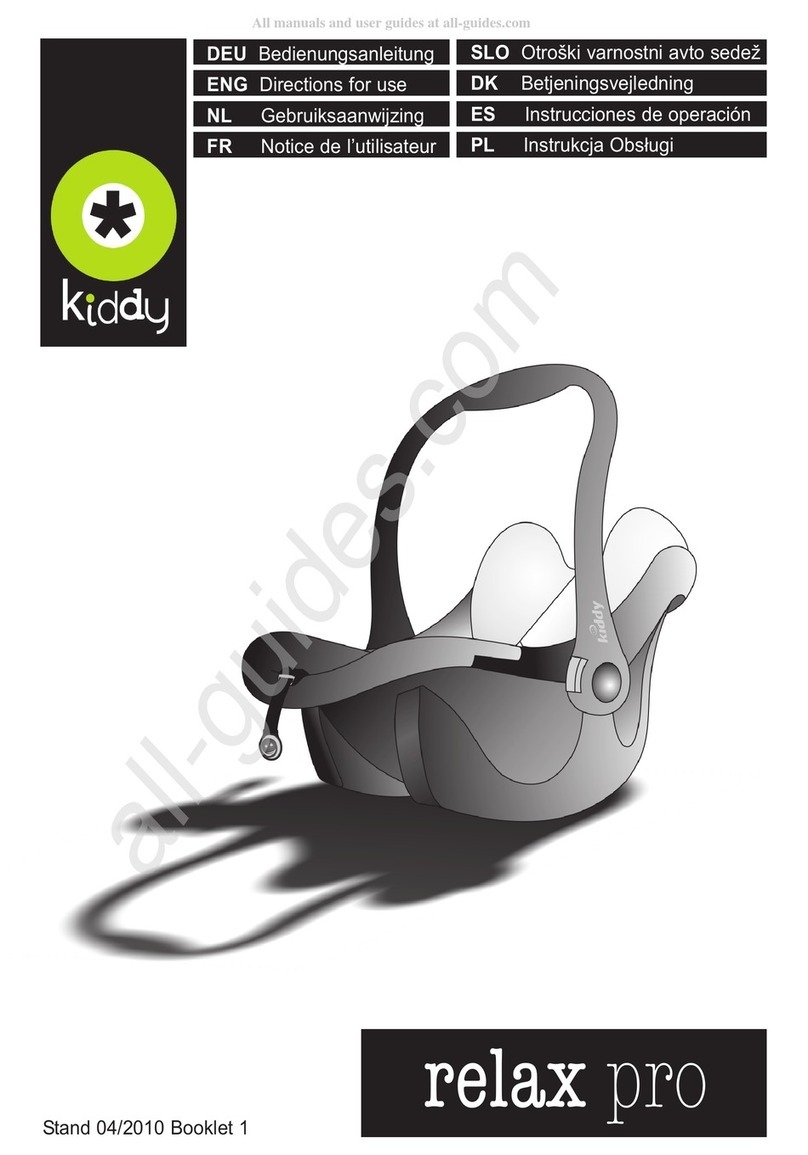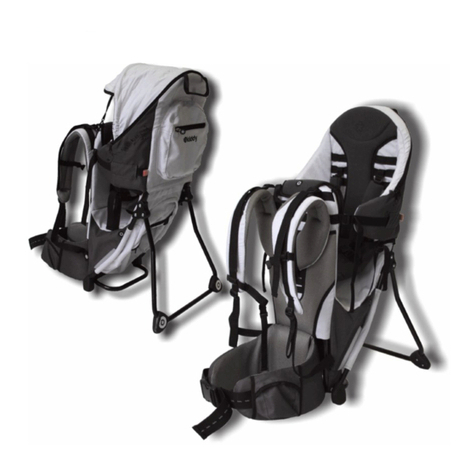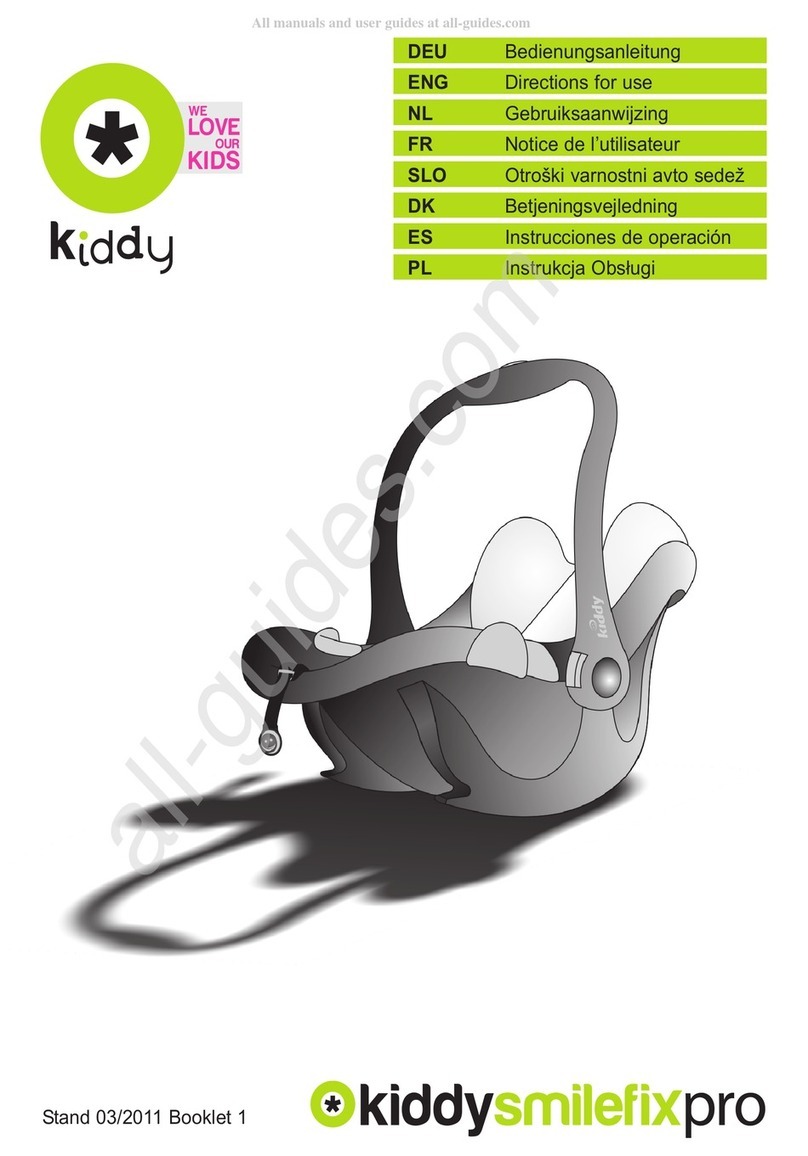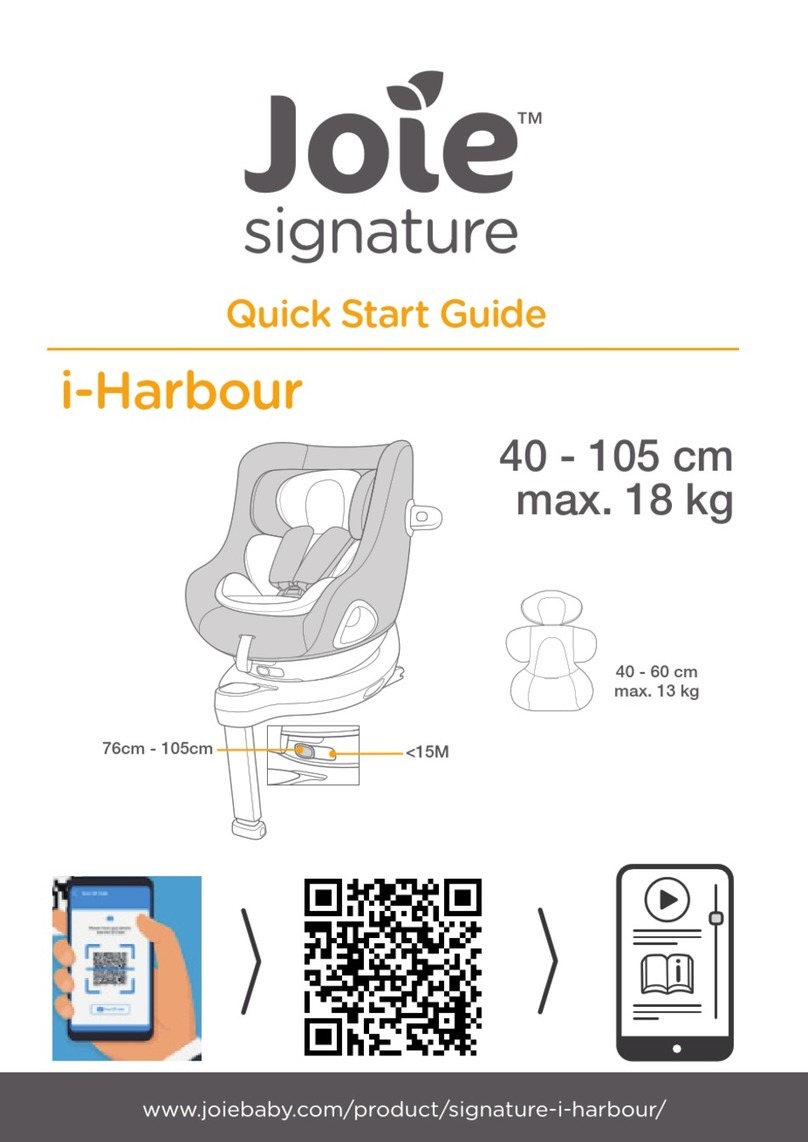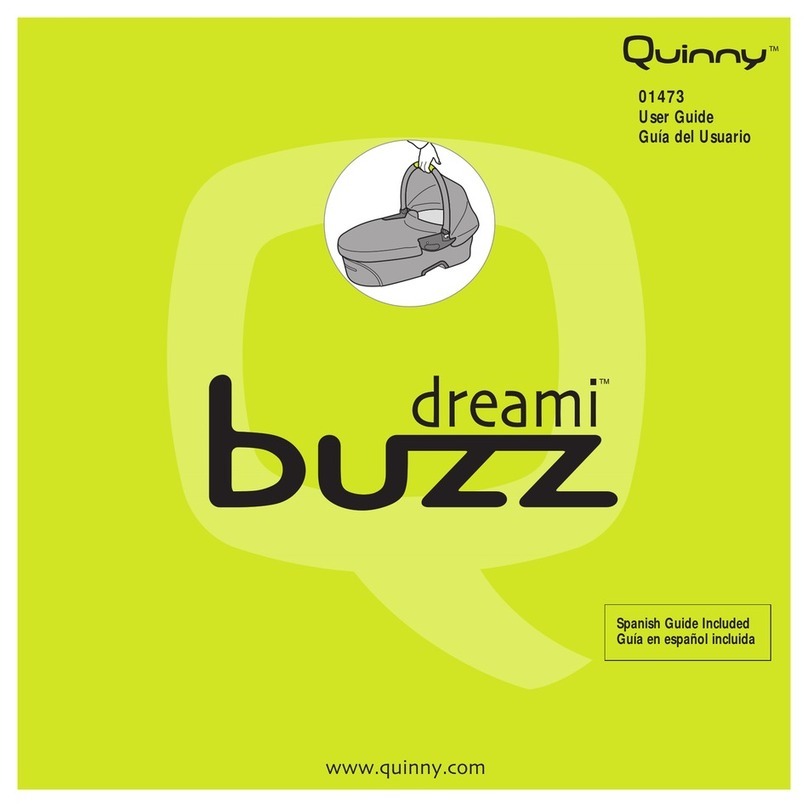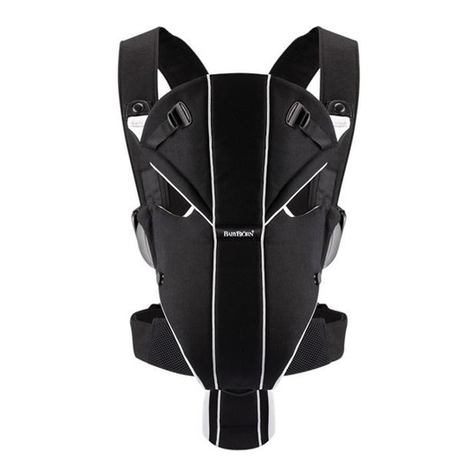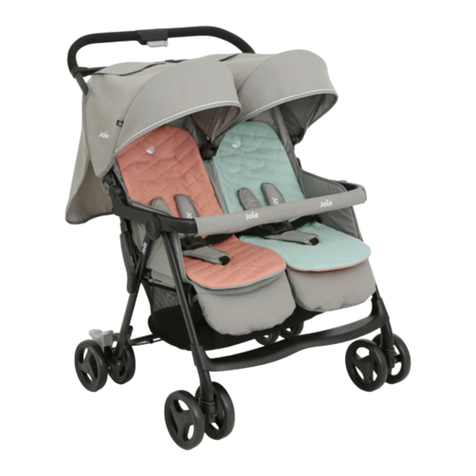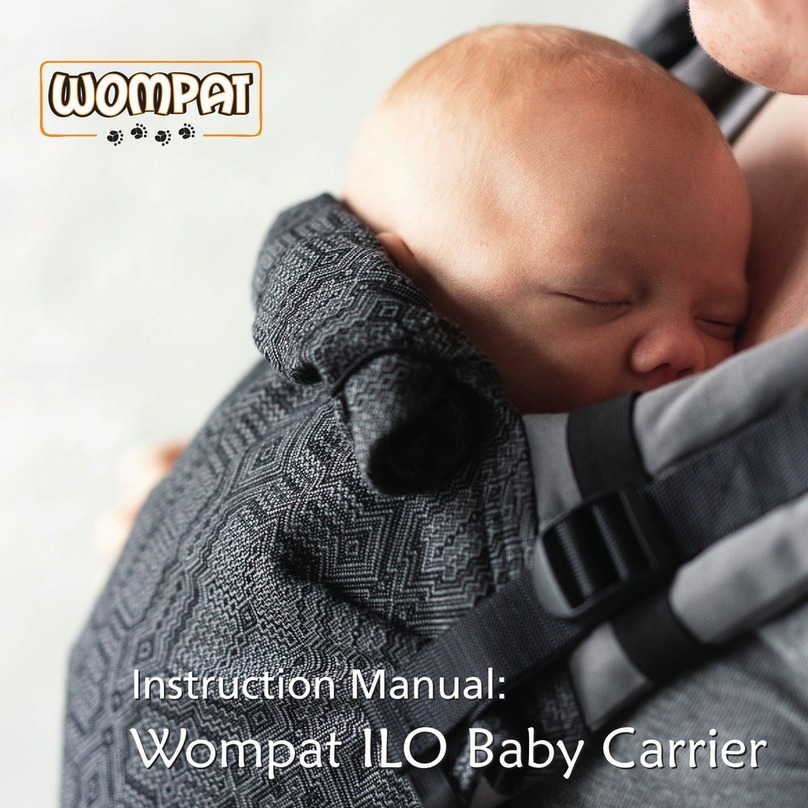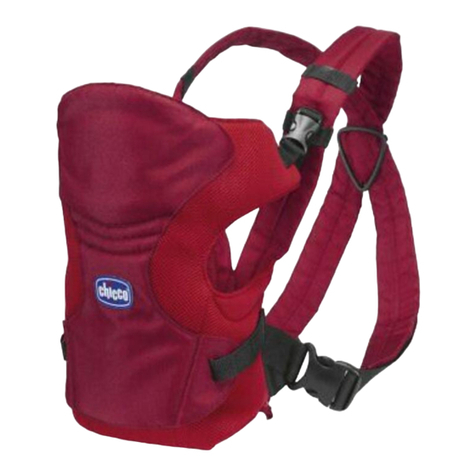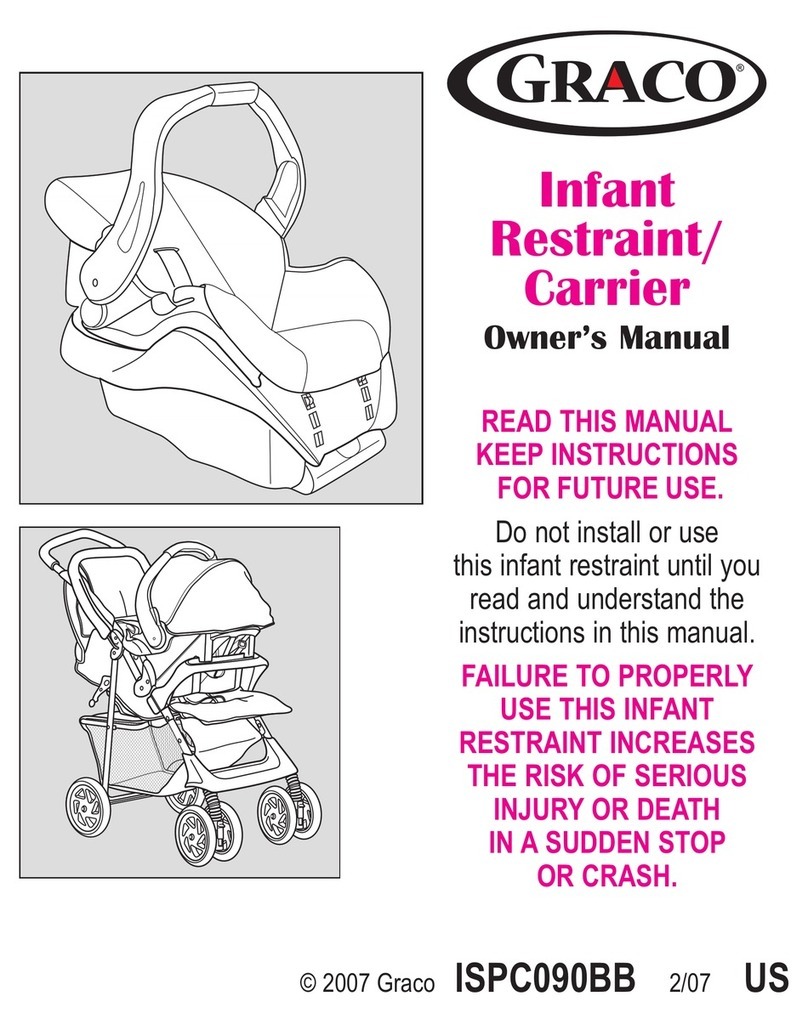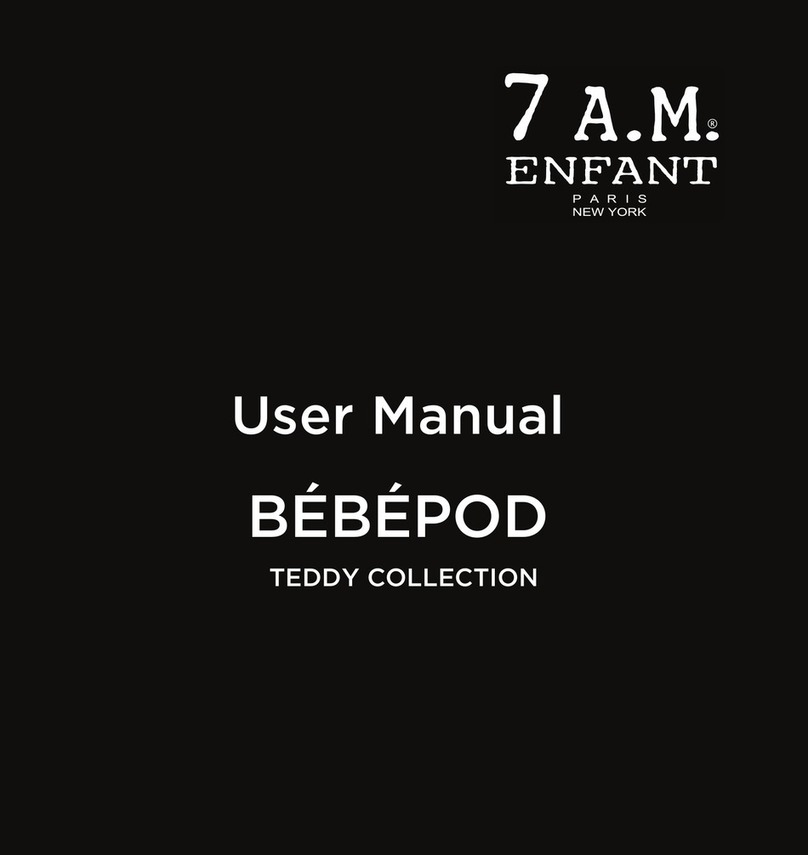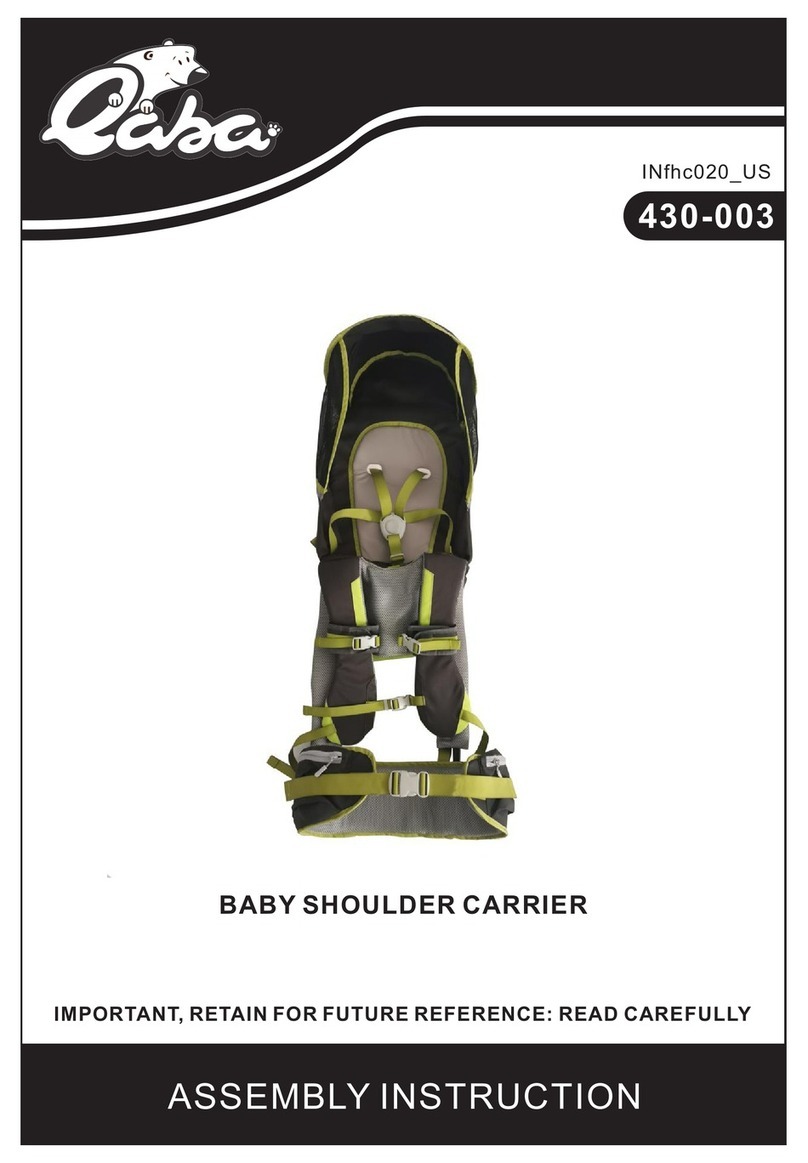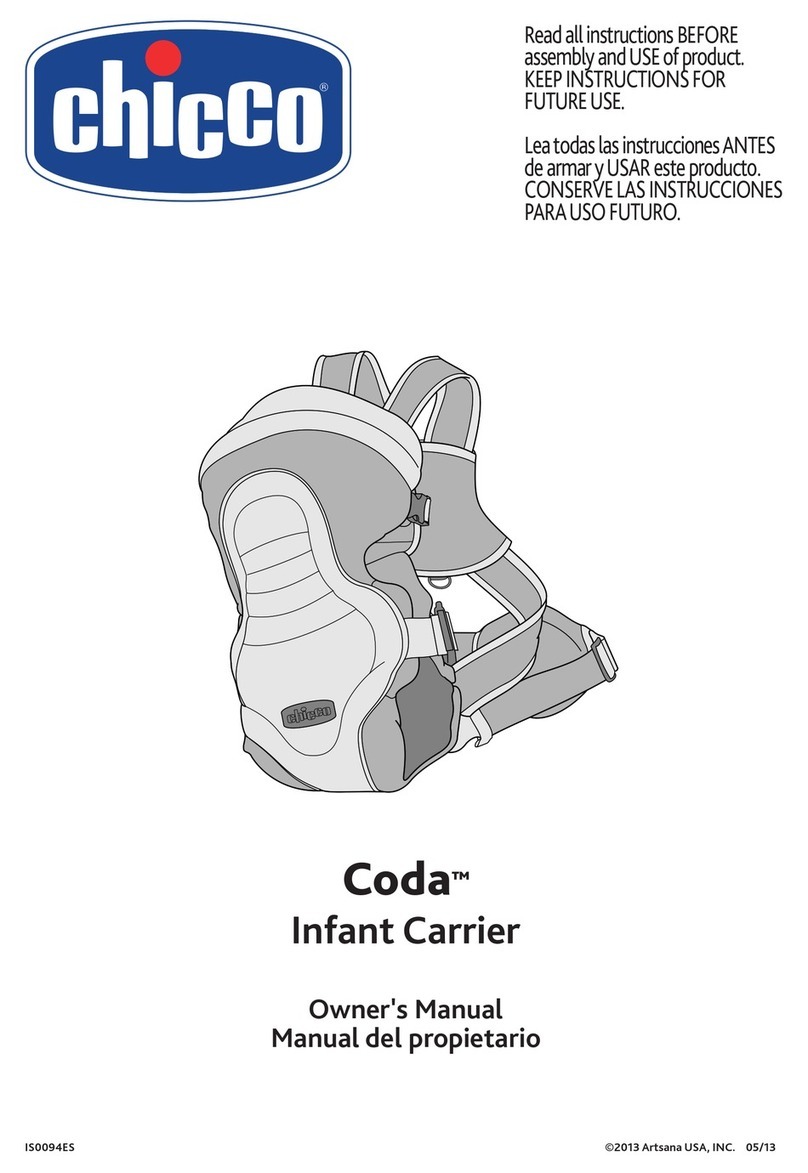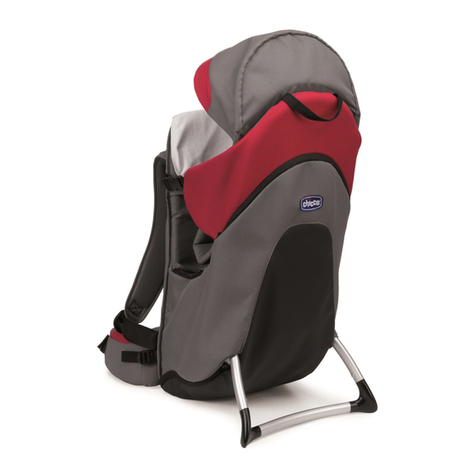
ENG
4
WARNING - Do not leave the child unattended in this carrier.
WARNING - The carrier is suitable for a maximum load of 44 lbs (20 kg)
(child + kit ≤ 44 lbs (20 kg)).
-child weight: min. 16.09 lbs (7.3 kg) - max. 39.68 lbs (18 kg);
-child size: 27.56 inch (70 cm) - 41.34 inch (105 cm)
WARNING - Always fasten the child with the safety belt according to these
directions for use.
WARNING - Never place the carrier on high surfaces (e.g. tables, chairs,
changing unit, etc.).
WARNING - Always fold out the stand before placing the carrier on the
ground.
WARNING - Sitting for long periods can cause fatigue and it may restrict the
blood circulation, especially on cold days. We recommend frequent breaks
during long walks or trips.
WARNING - When the child is in the carrier, it could be in a position higher
than the carer. Care should therefore be taken to be aware of hazards; e.g.
door frames, low branches of trees etc.
WARNING - When using the carrier the carer shall be aware of the following:
- the carer’s balance may be adversely affected due to
movement of the child and also the carer;
- the carer will need to take great care when bending or leaning
forward;
- the carrier is suitable for use when undertaking leisure
activities but not for sports activities;
- care should be taken when putting on or removing the carrier.
WARNING - The extra compartments may only be loaded with up to 4 lbs
(2 kg) additional weight (upper compartment 1 lbs (0.5 kg), lower
compartment 3 lbs (1.5 kg)).
WARNING - The carrier may not be used as a toy under any circumstances.
WARNING - Be aware that the child in the carrier may suffer from the effect
of the weather and temperature before you do.
WARNING - Avoid serious injury from falling or sliding out. Always use child
retention system.
